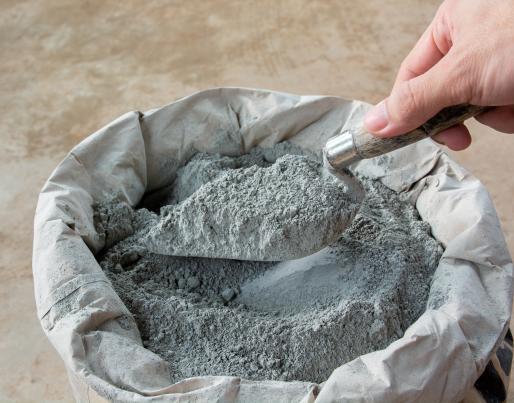
Mineral nanotechnology for concrete waterproofing: Major step towards sustainable construction

Mineral nanotechnology for concrete waterproofing: Major step towards sustainable construction
Mineral nanotechnology in concrete waterproofing supports the Energy Performance of Buildings Directive's 2050 decarbonisation goal by improving durability, reducing maintenance needs, and lowering energy consumption in building upkeep and repairs.
Author
María Esther Normey, Director and Co-Founder of Rebotec Europa.
(Note: Opinions in the articles are of the authors only and do not necessarily reflect the opinion of the EU)
An innovative waterproofing solution based on mineral nanotechnology has officially entered the European market. Originally developed in Brazil, this admixture offers a durable, eco-friendly, and low-impact alternative for moisture control in concrete structures.
Free from VOCs, chlorides, and synthetic substances, the powdered additive acts from within the concrete at the molecular level, transforming its internal matrix to repel moisture while maintaining vapour permeability.
Permanent protection through mineral nanotechnology
This technology chemically bonds with the cement matrix during hydration, leveraging a proprietary blend of silicon dioxide, Portland cement, and minerals. The result is a nanometric reorganisation that alters the internal polarity of concrete, making it permanently hydrophobic.
Key benefits of using mineral nanotechnology in construction:
Integral waterproofing: Becomes part of the concrete, ensuring total protection.
Durability: Reduces permeability and increases the lifespan of structures.
Non-toxic: Does not alter water potability, ideal for drinking water storage and supply.
Improves strength: Minimises the risk of structural damage caused by moisture.
Easy application: Directly incorporated into the concrete mix.
Efficiency: Optimises time and costs on-site by eliminating additional surface waterproofing steps.
Full compatibility: Does not affect the workability of concrete (slump), setting time, or shrinkage, and is compatible with standard mix designs and construction practices.
Key features:
100% mineral: Contains no organic or synthetic compounds.
Non-toxic: Safe for contact with potable water and livestock environments.
Fire resistant: Non-flammable and suitable for applications in various conditions.
Superior durability: Extends the lifespan of concrete structures.
Protection against mould and bacteria: Reduces the accumulation of harmful microorganisms.
Sustainable and eco-friendly: Free from volatile organic compounds (Zero VOC).
On-site stability: Does not affect workability (slump), setting time, or shrinkage, ensuring consistent performance.
Unlike conventional waterproofing systems, this integral solution becomes part of the concrete itself. It’s worth noting that it does not alter slump, does not interfere with setting time or shrinkage, and is fully compatible with standard mix designs and construction practices.
Contribution to the Energy Performance of Buildings Directive (EPBD)
The use of mineral nanotechnology in concrete waterproofing aligns with the goals of the Energy Performance of Buildings Directive (EPBD), which aims to achieve a fully decarbonised building stock by 2050. By enhancing the durability and efficiency of concrete structures, this technology contributes to lower energy consumption associated with building maintenance and repairs. The non-toxic and eco-friendly nature of the admixture supports the EPBD's emphasis on sustainable building practices and improving indoor air quality.
Additionally, its performance in extreme conditions also ensures long-term resilience and energy efficiency.
Certified performance and climate resilience
The admixture has been tested under European standards (EN 480-1, EN 12350-7, EN 12390-3) and holds CE certification (1377/CPR/ADI-0007) following EN 934-2:2009+A1:2012. These certifications confirm water resistance, mechanical integrity, and structural performance.
This technology remains effective under extreme conditions, from high temperatures to sub-zero climates, making it suitable for a broad range of regions and structural demands.
How to use
It is important to thoroughly mix it with the cement, as the nanotechnology is activated through mechanical stimulation during mixing. However, 10 minutes of mixing with an electric mixer, mortar mixer, or truck mixer is sufficient to fully disperse and activate the waterproofing properties within the concrete matrix.
Moreover, when applied in full-scale construction using new techniques such as 3D printing, this technology enables outstanding energy efficiency. By being integrated directly into the concrete mass, it creates a cave-like effect within the structure, helping to maintain a more comfortable internal microclimate—warmer in winter and cooler in summer, thus reducing the need for artificial heating and cooling systems.
Visual tests and fire resistance reinforce practical value
In addition to laboratory testing, visual and functional demonstrations have shown its performance under real-life conditions, reinforcing its practical value for diverse construction needs. This innovative approach to concrete waterproofing not only enhances the durability and sustainability of structures but also aligns with modern environmental standards, ensuring a safer and more resilient built environment.
Conclusion
The introduction of mineral nanotechnology for concrete waterproofing in Europe marks a major step forward in sustainable construction. By providing a non-toxic, durable, and efficient solution for moisture control, this technology not only extends the lifespan of concrete structures but also supports the broader goals of environmental sustainability and energy efficiency.
As the construction industry continues to evolve, the adoption of such innovative materials will be crucial in meeting the demands of modern building standards and regulatory frameworks.

